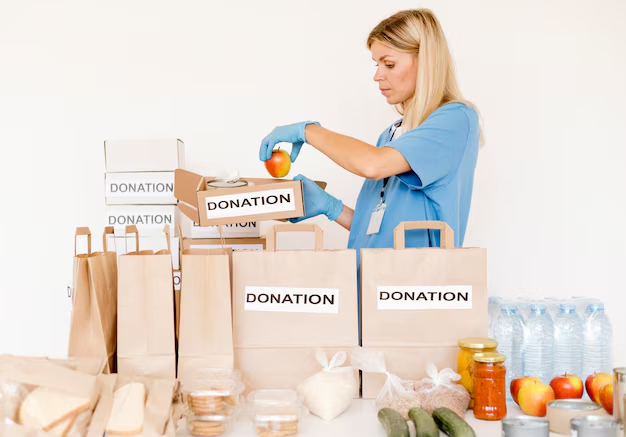Need Help Accessing Food? Here's How to Get Assistance from a Food Bank
It's a reality that sometimes unexpected challenges can strain even the best-laid financial plans. If you're finding it difficult to put food on the table, visiting a local food bank can be a vital way to ensure you and your family do not go hungry. Here’s a step-by-step guide on how to access food from a food bank.
Understanding What a Food Bank Is
At its core, a food bank is a non-profit organization that collects, stores, and distributes food to individuals and families in need. These banks serve as critical lifelines, often partnering with local charities, churches, and community groups to distribute food.
Steps to Get Food from a Food Bank
Locate a Nearby Food Bank
Start by finding a food bank in your area. You can look up food banks online, contact a local social service agency, or call helplines for guidance. National organizations often offer directories on their websites.Understand Eligibility Requirements
While many food banks aim to assist anyone in need, some may have specific criteria for assistance. This can include income guidelines or documentation requirements. Be sure to gather any necessary documents, such as identification, proof of residency, or income statements, before you visit.Visit During Designated Hours
Food banks typically have set hours of operation. Make sure to check their hours ahead of time to avoid any inconvenience. If mobility is an issue, inquire about delivery options they might offer.What to Expect
Once you arrive, you'll likely need to fill out some paperwork. This helps the food bank track services and ensures they meet community needs effectively. Volunteers will then assist you in selecting food items, often tailored to your family’s size and dietary preferences.Be Open to Different Foods
The food provided may vary. You might not always receive your preferred brands or products, but the variety typically covers essential food groups to help maintain a balanced diet.
Beyond Food Banks: Exploring Additional Support
While food banks can provide immediate relief, it’s vital to explore additional long-term support options to alleviate financial stress.
Government Assistance Programs
Supplemental Nutrition Assistance Program (SNAP): A federal aid program offering nutrition assistance, commonly known as food stamps.
Women, Infants, and Children (WIC): Provides nutritional support for low-income pregnant women, breastfeeding mothers, and young children.
Financial Assistance Tools
Local Charities and Churches: Many offer emergency financial assistance for bills, rent, or groceries.
Utility Assistance Programs: Help in paying utility bills is often available through government or local charity initiatives.
Debt Relief and Credit Solutions
Credit Counseling Services: Professional advice to manage debts and improve financial health.
Debt Consolidation: Consider consolidating debts into one manageable payment to ease financial strain.
Educational Opportunities for Financial Stability
Scholarships and Grants: Available for education or vocational training, these can offer pathways to higher-paying jobs.
Community College Programs: Often provide affordable options for acquiring new skills or degrees.
🍎 Explore Financial Aid Options:
- SNAP & WIC
- Local aid from charities and churches
- Utility payment programs
- Credit counseling services
- Debt consolidation opportunities
- Scholarships and grants for career advancement
Facing financial hardship isn't easy, but by utilizing community resources like food banks and exploring further assistance programs, you can navigate these challenges and work toward a more stable future. Remember, reaching out for help is a positive step towards ensuring well-being for you and your loved ones.
